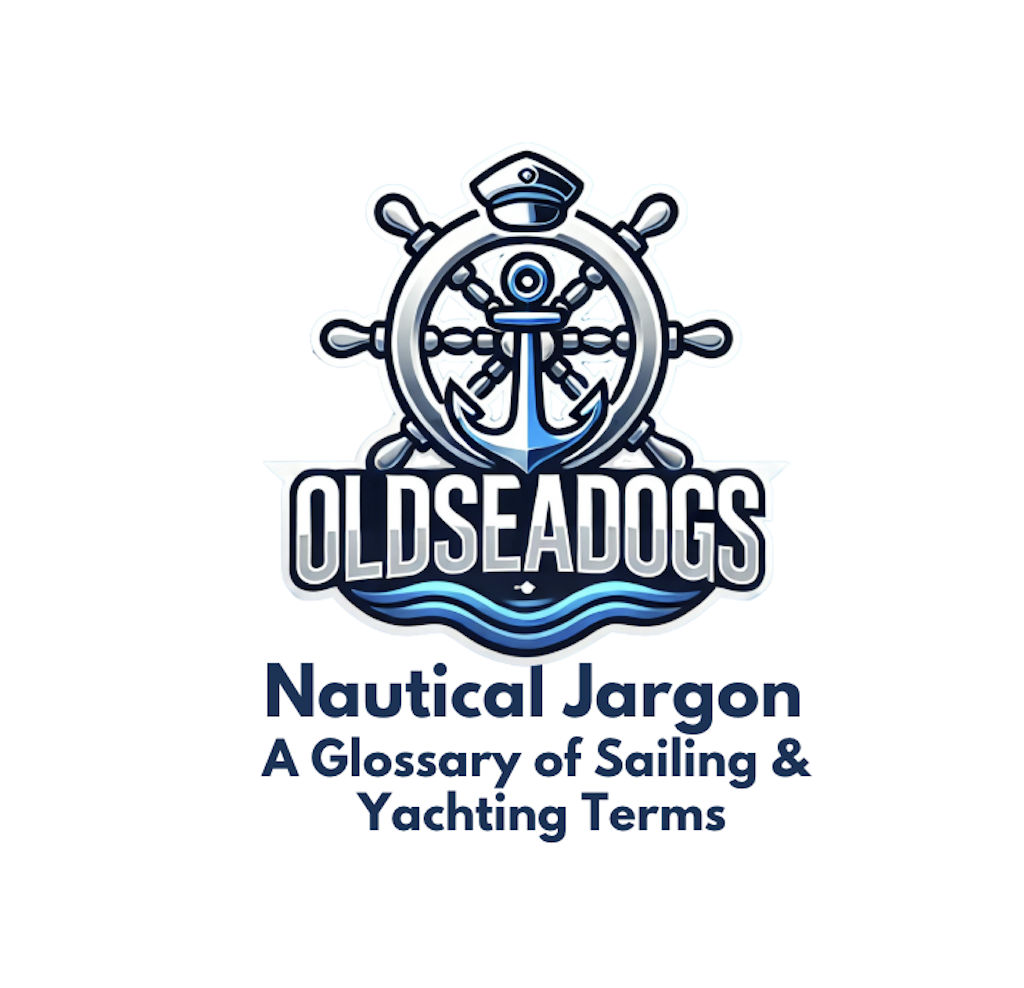Nautical Jargon Dictionary
Published:
21 Aug 2025
Dive into the depths of maritime language with this comprehensive nautical glossary, your essential companion for understanding the rich and storied vocabulary of the sea. From ancient sailing terms to modern marine jargon, this glossary demystifies everything from “abaft” to “zephyr,” offering clear, concise definitions perfect for sailors, writers, historians, and curious landlubbers alike. Whether you’re navigating a tall ship or crafting a seafaring tale, this guide anchors your knowledge in the traditions and precision of nautical speech.

Michael Hodges
Nautical Jargon
Old Sea Dogs Nautical Jargon
Speed, Distance & Time
- Dead Reckoning – A method of estimating your position based on speed and course.
- Drift – The effect of current or wind pushing the vessel off its course.
- ETA – Estimated Time of Arrival.
- ETD – Estimated Time of Departure.
- Knot – One nautical mile per hour. Used instead of mph at sea.
- Log – A record of speed, distance, time, and voyage data.
- Nautical Mile – 1.1508 land miles or 1.852 kilometres. Based on the Earth’s circumference.
Directions & Positioning
- Abeam – Directly to the side of the boat (90 degrees).
- Aft – Toward the rear of the vessel.
- Astern – Behind the boat.
- Bow – The forward part of a boat.
- Fore – Toward the front of the vessel.
- Leeward (or Lee) – The side sheltered from the wind.
- Port – The left side when facing the bow (front).
- Starboard – The right side when facing the bow.
- Stern – The back end of the boat.
- Windward – The direction from which the wind is coming.
Parts of the Boat
- Boom – A horizontal spar attached to the bottom of the mainsail.
- Cockpit – The area where the helm and controls are located.
- Deck – The flat surface you stand on.
- Helm – The steering mechanism (wheel or tiller).
- Hull – The main body of the boat (below the deck).
- Keel – A fixed fin under the hull for balance and to prevent sideways drift.
- Mast – The vertical pole that supports the sails.
- Pulpit – A guardrail at the bow (front) of the boat.
- Pushpit – A guardrail at the stern (back) of the boat.
- Rudder – Used to steer the boat.
Sailing Terminology
- Beam Reach – Sailing with wind coming from the side.
- Close-Hauled – Sailing as directly into the wind as possible.
- Gybe (or Jibe) – Turning the stern through the wind.
- Heeling – The boat leaning to one side under wind pressure.
- Halyard – A rope used to hoist sails.
- Point of Sail – The boat’s direction relative to the wind.
- Reefing – Reducing sail area to manage wind power.
- Running – Sailing with wind from directly behind.
- Sheet – A rope that controls sail angle.
- Spinnaker – A large, balloon-like sail used for downwind sailing.
- Tack – Turning the bow through the wind; also the side the wind hits first.
- Trim – Adjusting sails for best performance.
Lines, Rigging & Gear
- Block – Pulleys used to redirect or gain mechanical advantage on lines.
- Boom Vang – Controls the boom’s vertical movement.
- Cleat – A T-shaped fitting to secure lines.
- Fender – A cushion placed between boat and dock.
- Line – General term for rope on a boat.
- Tiller – A lever used to steer (on smaller boats).
- Winch – A rotating drum used to pull in heavy lines.
Navigation & Communication
- AIS (Automatic Identification System) – Displays other vessels’ locations, names, and headings.
- Bearing – The compass direction to a landmark or object.
- Chart – A marine map with depths, hazards, and nav markers.
- Mayday – Distress call (life-threatening).
- Pan-Pan – Urgent but non-life-threatening situation.
- Radar – Detects objects around the boat using radio waves.
- Security – A safety message or navigation warning.
- VHF Radio – Primary short-range marine communication.
- Waypoint – A reference point used in GPS navigation.
Onboard Living & Miscellaneous
- Berth – A sleeping space or bed.
- Bilge – The lowest compartment inside the hull.
- Cabin – An enclosed living space.
- Galley – The boat’s kitchen.
- Head – The boat’s toilet.
- Holding Tank – A tank for waste until it can be pumped out.
- Scuppers – Drains on deck to let water flow out.
- Tender – A small boat used to go ashore from a larger boat.
More masterclass










